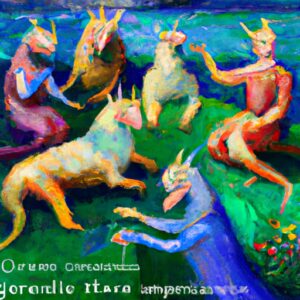How to say “with” in Italian
In today’s short lesson, you’re going to learn how to say “with” in Italian.
It’s easy to remember since it only has 3 letters: “con”.
Like in English, we use this word when we want to talk about something or someone being accompanied by something or someone else.
Con: examples
Let’s have a look at some examples:
Vai a casa con tua sorella?
Are you going home with your sister?
Vieni con i tuoi genitori stasera?
Are you coming with your parents tonight?
Mi piace parlare con te.
I like talking with you.
Lei scrive sempre con la mano destra.
She always writes with her right hand.
Mangio un panino con il formaggio.
I’m eating a sandwich with cheese.
Col, coi
You might also hear the abbreviated versions of “con + il”, and “con + i”:
- con + il: col
- con + i: coi
Both options are correct. Sometimes, it’s just easier to say the shortened versions.
Have a look at the examples below:
Vado a casa col cane.
I’m going home with the dog.
Luigi vive ancora coi genitori.
Luigi still lives with his parents.
How to say “without” in Italian
In Italian, if we want to say “without”, we say senza. We recommend checking its pronunciation by just clicking on the word.
Unlike con, senza cannot be abbreviated.
Like in English, we use senza in Italian to indicate the absence or lack of something.
Interestingly, this word seems to come from the combination of the Latin words absentia (absence) and sine (without).
If you remember this, it might be easier for you to remember the word senza.
Senza: examples
Let’s now look at some examples with senza:
È uscito senza ombrello.
He went out without an umbrella.
Non so cosa farei senza il suo aiuto.
I don’t know what I’d do without his help.
Non senza alcune riserve.
Not without some reservations.
Cosa farei senza di te?
What would I do without you?
Non posso stare senza di lei.
I can’t live without her.
Siamo rimasti senza zucchero.
We’ve run out of sugar. (Literally: We’re left without sugar.)
With and without in Italian: key points
“With” is easy to remember, since it has just three letters: “con”.
We use this word when we want to talk about something or someone being accompanied by something or someone else.
If you want to make it even easier to say, you can use the abbreviated versions: col and coi.
If we want to talk about “without”, we’ll use the word “senza“.
Unlike “con“, “senza” cannot be abbreviated and we use it to indicate the absence or lack of something.










4 Responses
Would ‘non posso vivere senza di lei’ be correct?
Ciao @meina!
Yes, it would be correct.
Stefano, is senza + di when a person/pronoun and otherwise just senza? Grazie!
Esatto! “Di” + pronome personale.